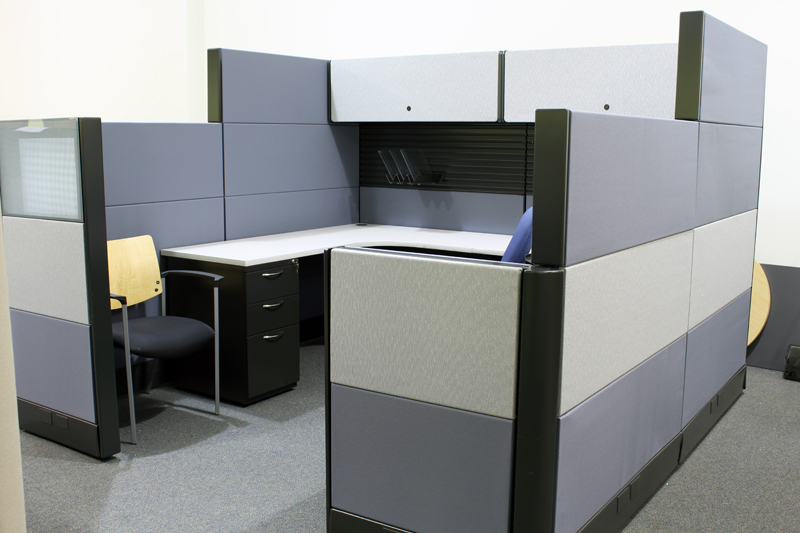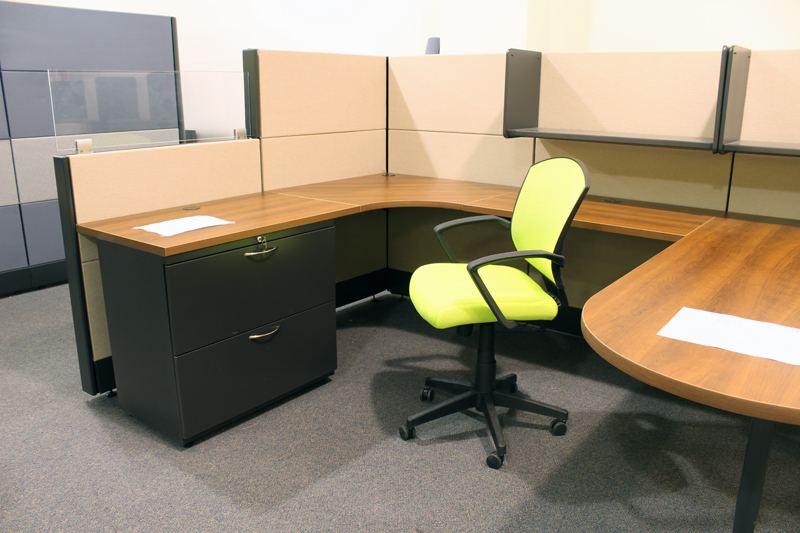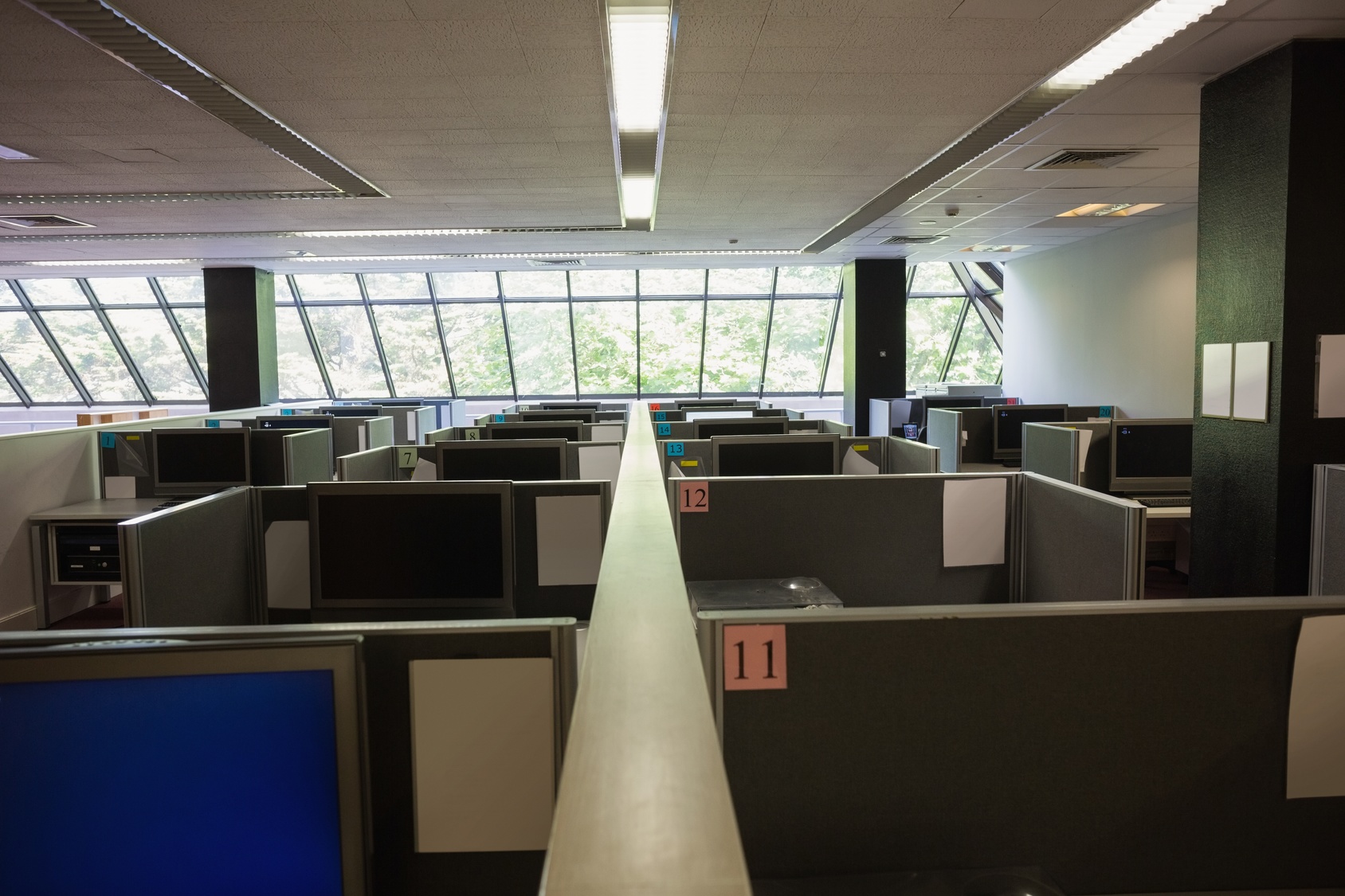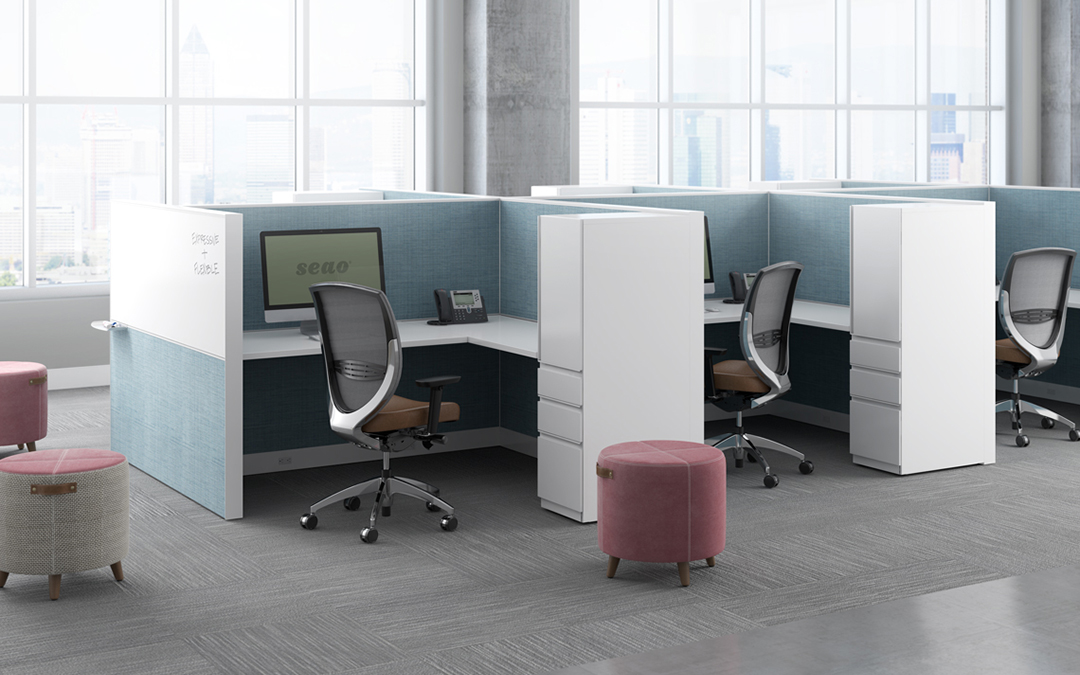Your office design and layout should strike a balance between efficient use of the building’s space and giving employees the room they need to be productive. Before starting your office cubicle search, ask yourself these questions:
Does your business value tradition or creativity? The answer to this question can help you narrow down cubicle layout preferences, as well as the colors and materials of the cubicles.
Is collaboration or privacy more important? Cubicles are meant to divide an office into many personal spaces and come in a variety of heights that can limit or promote privacy. However, creativity tends to stem from collaboration, and more creative businesses might be better off utilizing benching systems as the foundation of their open office plan with modular cubicles built in as supplemental pieces.
How much space do your employees need? Some employees might need little more than their computer and phone, while others might require multiple filing cabinets at their workstation. Understanding the needs of your employees makes it much easier to decide on cubicle size. There’s no need for an employee to have a ton of extra space that goes to waste, just as there’s no need for someone to have to squeeze into their cubicle.
Do you have high or low employee turnover? Employees that are likely going to be around for years should be able to personalize their offices, and that often requires more space. Employees in high turnover environments like call centers might not require or desire the space to add a personal touch.
Office Cubicle Styles & Heights
After you’ve given some thought to the questions above, you should start to think about the different styles and heights of office cubicles as well as their fit with other office furniture in your workplace. The sizes and heights of the cubicles you purchase will help organize your office and structure the culture you want to nurture. There are generally three types of cubicles to choose from:
- Call Center Cubicles: These cubicles are ideal for businesses that want to maximize the number of employees that can fit in a space. These cubicles are most commonly found in 2’x5’, 4’x4’, or 5’x5’ and feature shorter walls, or perhaps glass panels for some additional transparency. These cubicles are occupied by only one person, and there isn’t much room to add personal flair.
- Standard Cubicles: These work areas can actually be quite spacious, and they can be arranged in a variety of layouts or have various work surfaces. Standard office cubicles are meant for one employee, but there’s space for an additional chair when necessary. The extra space in these cubicles is generally dedicated to computers, new file cabinets, used file cabinets, and other office equipment. Standard cubicle sizes tend to be 6’x6’, 6’x8’, or 8’x8’.
- Modular Cubicles: Some employees need even more privacy than a standard office cubicle provides, especially when it comes to human resources, financial, or medical personnel. Modular offices, which are basically higher-walled cubicles with doors, are a great solution to this issue. These cubicles have a larger footprint than standard cubicles, can be as tall as 12’, and are generally glass or solid paneling.



- Low (42” wall height)
- Medium (54” wall height)
- Tall (60” wall height)
While these heights might vary slightly depending on the manufacturer, these are the most common office cubicle heights. The height of your cubicles should depend on the office culture you want to build. If your employees need to collaborate on a consistent basis, having low cubicle heights makes communication much easier. Higher cubicle heights obviously make each space more private.
Potential Office Cubicle Layouts
The overall space of the office and the size of the cubicles you choose will have an impact on layout possibilities, but this aspect of office design should not be overlooked. Depending on the size of your workforce and how they interact on a daily basis, certain layouts might be better than others. Here are four potential layouts to consider:




- Bullpen: A bullpen layout is basically just one very large cubicle that allows a team to work together without dividers. If you have a team of employees that works closely on a daily basis – such as a marketing team – this layout creates an open office feel that is conducive to productivity.
- Cluster: The cluster layout is what most people typically think of when cubicles are mentioned. This layout involves cubicles sharing a center spine, and it is often used to maximize the number of workspaces while also cutting down on office furniture costs.
- Straight Run: A straight run layout is when cubicles are lined up in a row, with each cubicle sharing a wall with two others. This layout is ideal for smaller offices, and the row of cubicles typically rests against a wall.
- Private Offices: These layouts feature modular cubicles and make it easy to evolve offices as the business grows or changes. These are great alternatives to permanent walls because they save on costs while still allowing maximum privacy.
Even after considering all your options, purchasing cubicles and other office furniture can be a tough decision especially when attempting to maximize the space at your disposal. If your business needs new or slightly used cubicles, please contact us at Office Furniture Warehouse.
Our team of experts will help you find the right office furniture solutions at the best price possible.

